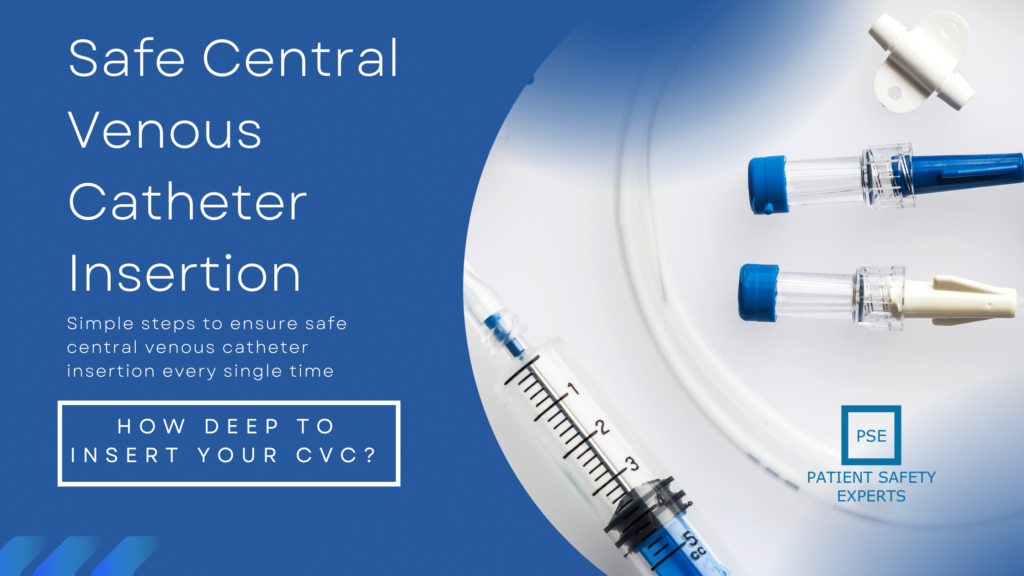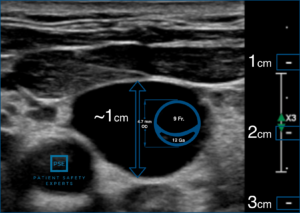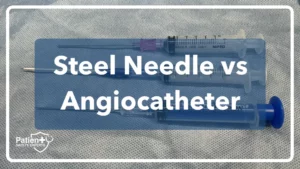Estimated reading time: 3 minutes
Mike
The Optimal Depth to Insert a Central Venous Catheter
Don’t make it harder than it should be. There are two key points to keep in mind for patient safety regarding how deep to insert a central venous catheter. They are as simple as don’t insert the catheter too deep and don’t place the catheter too shallow.
Complications associated with CVC are numerous and can be roughly classified as early (<24 hours after insertion) or late (>24 hours after insertion). Early complications are usually due to the insertion mechanics and are more likely to be fatal than are the late ones.
The Dangers of Inserting Central Venous Catheters too Deep.
The most significant risk of inserting central venous catheters too deep is the two words you never want to hear in medicine: cardiac tamponade.
Cardiac tamponade is caused by fluid accumulation, in this case, blood within the fibrous non-compliant pericardial sac after cardiac or vena cava perforation.
Cardiac tamponade is a well-recognized but rare complication of central line insertion with an extremely high mortality rate. It can occur early (<24hrs), and it can happen late (>24hrs).
Early-onset cardiac tamponade is thought to arise from the guide-wire, dilator, and venous cannulation perforating the right atrium, right ventricle, and, on rare occasions, the superior vena cava.
Late-onset cardiac tamponade, on the other hand, is usually the result of the catheter lying against the wall of the superior vena cava (SVC), the right atrium, or the right ventricle. In this scenario, the catheter slowly causes tissue necrosis, eroding the wall leading to perforation. These locations make sense as these are the most likely long-term locations of the catheter.
The key to preventing cardiac tamponade is to keep all your needles, wires, and catheters outside the pericardial reflection, which extends slightly above the carina on chest x-ray.
The dangers of inserting a central venous catheter too shallow
The primary danger of inserting a central venous catheter too shallow is tissue extravasation of the fluids and medications being administered through the catheter. Central venous catheters are not static structures after insertion.
It has been radiographically demonstrated that the catheter tip of a can significantly move up cephalad, from the mid-right atrium to low SVC, when the patient sits up; this migration was more remarkable for CVC placed in the subclavian veins in females and obese patients.
How Deep to Insert a Central Catheter Quick Reference
Based on the Results from Kim, Lee, et al.:
The recommended depth of insertion from the four most common upper torso insertion sites are:
- 14 cm for the right subclavian vein,
- 15 cm for the right internal jugular vein,
- 17 cm for the left subclavian vein
- 18 cm for left internal jugular vein.
The most common lengths for central venous catheters are the 15-16cm catheter length, the 20cm catheter length, and the 24cm catheter length.
Knowing this, you should not “hub” and central venous catheter on insertion, particularly the 20cm and 24cm catheters when inserted on the patient’s right side.
References:
- Kim WY, Lee CW, Sohn CH, Seo DW, Yoon JC, Koh JW, Kim W, Lim KS, Hong SB, Lim CM, Koh Y. Optimal insertion depth of central venous catheters–is a formula required? A prospective cohort study. Injury. 2012 Jan;43(1):38-41. doi: 10.1016/j.injury.2011.02.007. Epub 2011 Mar 5. PMID: 21377676.












